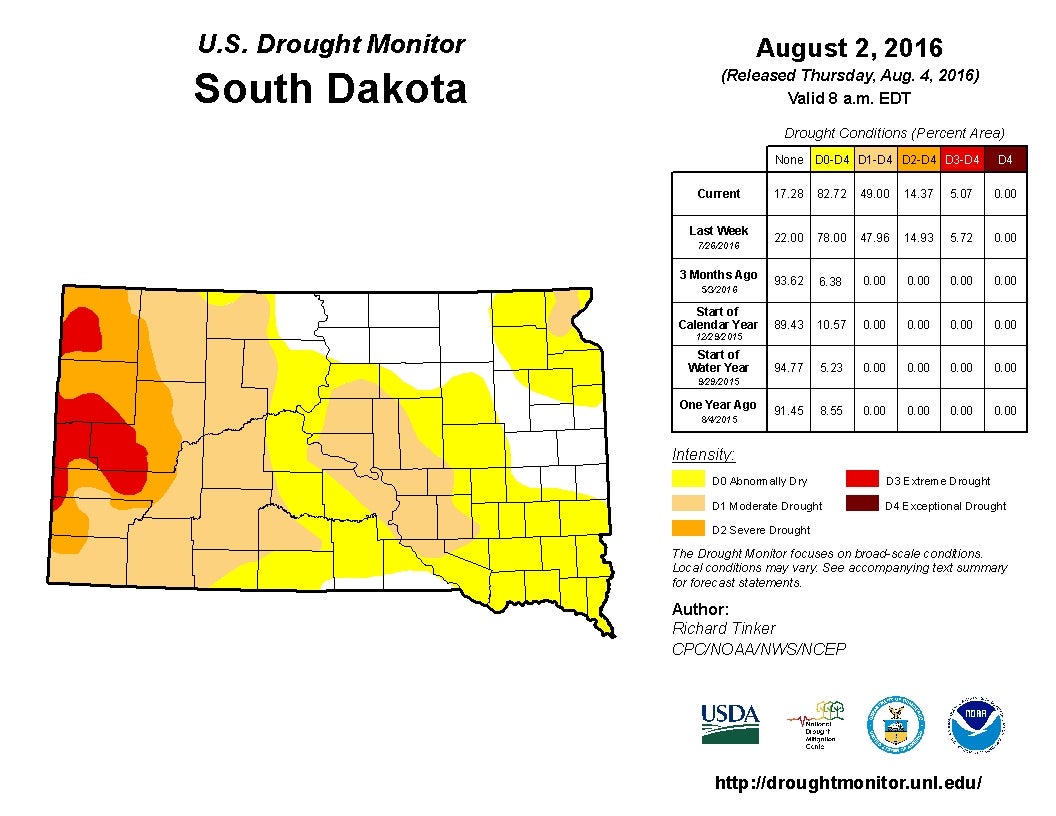Search

Best Management Practices for Sunflower Production
This is your unbiased, research-based guide to sunflower production, providing the latest recommendations to help increase yield, reduce input costs and protect your investment.

Noxious Weeds of South Dakota
Pictorial reference guide of noxious weeds in South Dakota

South Dakota Water and Community Symposium to be Held July 26
July 22, 2022
SDSU Extension will host a one-day South Dakota Water and Community Symposium on Tuesday, July 26 from 9:30 a.m. – 2:30 p.m. CDT at the Raven Precision Agriculture Center on the South Dakota State University campus in Brookings.

Sheep Facilities and Moisture
Fact sheet for keeping a barn comfortable and dry to increase lamb survival.

Water Conservation and Efficiency During Times of Drought
As drought conditions continue to expand across the state this year, more thought is given towards South Dakota’s limited water resources. We live in a state where weather conditions and rain patterns seem to comfortably exist at the extremes; we either have way too much or nearly not enough. While this isn’t always the case, it is important to keep in mind that our water resources are finite and all of us should be thinking about doing what we can to protect them.

Bacterial Leaf Streak of Corn: A New Corn Disease in South Dakota
Bacterial leaf streak, caused by Xanthomonas vasicola pv. vasculorum (Xvv), is a recently discovered disease of corn in South Dakota. The disease was first identified in Nebraska in 2016 but now has been found in the majority of the Corn Belt states. Under favorable weather conditions bacterial leaf streak can develop to reach yield reducing levels. Like any other bacterial disease, once symptoms develop there is little that can be done to control it in the field. However, it is important to correctly diagnose this as a bacterial disease because it can be confused with gray leaf spot which is a fungal disease.

Fungicide Resistance: Risk and Management
What is fungicide resistance?
Fungicide resistance can be defined as when a pathogen population is no longer sensitive or has reduced sensitivity to the fungicide that used to control the same pathogen.

Are you ready for winter? ¿Està listo para el invierno?
The first winter experience can be a challenge if you don’t know what is ahead, except for that there will be snow and cold. Some simple tips will help you survive the snow, ice and low temperatures.

Pre-weaning Pneumonia in South Dakota Beef Herd: A Persistent Problem, Suddenly Gone
This case report describes a southeastern South Dakota cow-calf herd’s experiences with pre-weaning pneumonia. Unlike many beef herds that experience pneumonia in calves on pasture, this herd’s problems were consistent year after year: widespread calf illness was documented in each of 6 consecutive summers. Anecdotally at least, the occurrence of pre-weaning pneumonia in beef herds is more likely to be sporadic and unpredictable from year to year. This herd’s persistent problems were followed by a year in which, after a change in calf vaccination protocol (informed by herd diagnostics), very little pre-weaning pneumonia was observed.

Lawn Weed Control
Cultural weed control practices must be included in weed management programs to optimize control and inhibit re-infestation. A healthy, dense turf cover is the best overall defense against weed invasion. Some common cultural weed control practices include planting the most adapted turfgrass species for your environment (i.e. shade, full sun, or hot, dry conditions), maintaining a mowing height of 2.5–3.5 inches, watering deeply but less frequently, and proper soil maintenance including fertilization and core aerification.